
So this is it, my last studio project of M.Arch 1, and I'm pretty satisfied with how it turned out. We're on quarters, so what you see below is 10 weeks of work. The presentation is one big board (roughly layed out on a grid of 11x17s) accompanied by 3 small booklets (1- study models and project development, 2- the current project/proposal, 3- previous work/portfolio), and a physical model.
I haven't included the booklets below, as it's a lot of redundant material (all available on flickr set for the project), so what follows are the images and text from my presentation board. please feel free to comment, and thanks for looking. next quarter is 'exit review'......
-----------------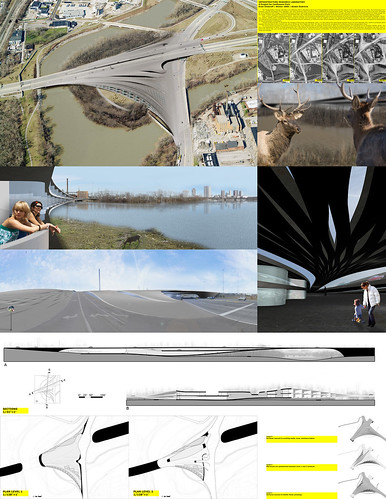
The Transportation Futures Laboratory at Confluence Park is devoted to the study of transportation infrastructure and the impact it has on the shape of our cities, the functioning of our economy, and the psychology of our populace.
Like many American cities, Columbus, Ohio is defined by its transportation routes. The early frontier outpost only grew into a city once connected by rail to Baltimore and Chicago. It expanded along its primary axes (High street to the north and south and Broad St to the east and west) as streetcars allowed workers to reside outside the city center. Further expansion following the Second World War was made possible by widespread automobile ownership and the continuing expansion of the interstate highway system.
Now, as the world faces exploding population, resource scarcity, and environmental degradation, the means and methods of human conveyance must be fundamentally rethought. Columbus, lacking reliable public transportation, seems poised to embrace new technologies that can redefine its local and regional transportation networks, but only if public awareness is raised, and appropriate technologies are found. The Transportation Futures Laboratory at Confluence Park will be engaged in these two tasks: increasing public awareness, and research & development of new transportation technologies.
Though Confluence Park is named for the merging of the Scioto and Olentangy rivers, it is also sited at the interchange between Route 315 and Interstate 670, marks a connection point between two branches of the a bicycle trail, and is not too far from freight rail lines. The site can be thus be considered the confluence of these transportation flows.
For future transit networks to succeed in Columbus, they must interface with the existing infrastructure, either by using it explicitly, or connecting to it at strategic transfer points. The site is well-positioned for either of these possibilities, but in the interest of maintaining the local ecology and elevating the building form above the flood plain, the decision has been made to ignore the natural site, and connect directly to the existing infrastructure, leaving the ground undisturbed. The resulting form can be read as a thickening and inhabitation of the highway exit ramp and overpass.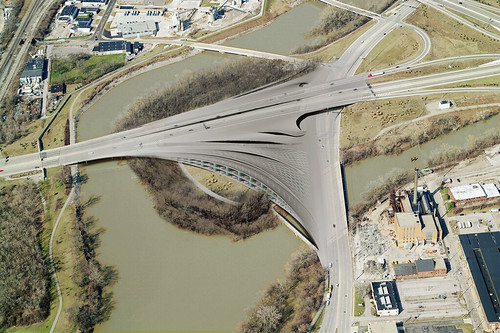
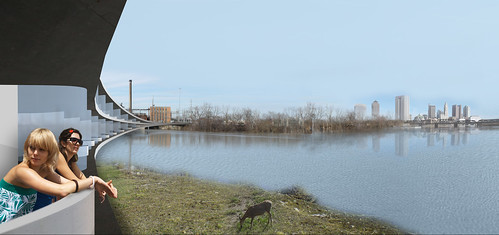
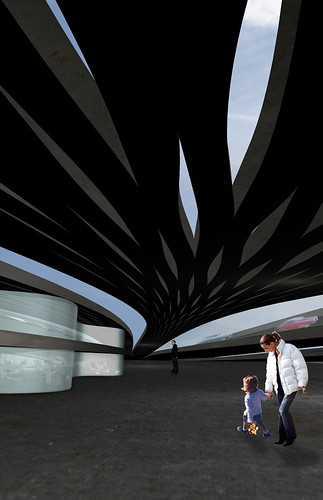




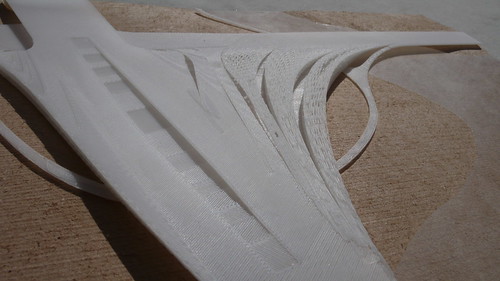
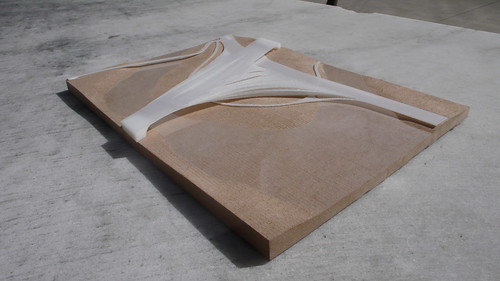

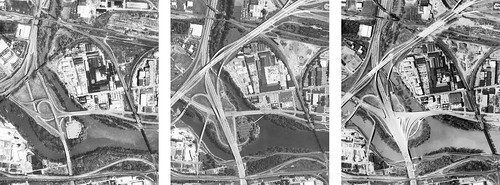
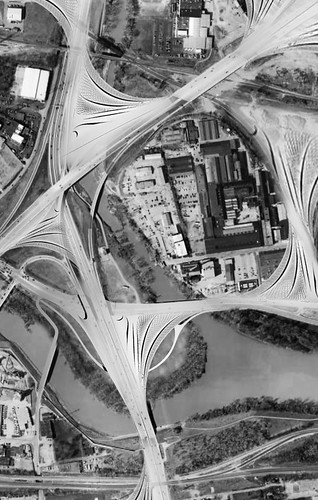
Thoughts on the M.Arch I program at the Ohio State University, 2005-2009, plus additional work with OSU as a critic and lecturer.



5 Comments
Loving the top left image in the assembled board, it's some pretty nice photoshop work! Also, what was the rapid prototyping method used for the physical? It looks like it could be SLS or Dimension3D...
Thanks! The 3D print is from our Stratasys Vantage i, and the base is milled mdf - plus hand-cut transparency sheet for the river ;)
looks like someone took an interstate and smushed it out with their finger.
I want to know more about the interior - how does it feel and is there a correlation with the immediate environment reflected inside. Additionally was your solution to this just a formal algorithmic exercise or was it a response towards how you can programme these activities in what is typically both a non-buildable area of the city?
the interior is one of the least-developed aspects of the project. it would be nice to have more time (on quarters, so this is 10 weeks of work), but as i presented it the immediate environment is ignored. The reviewers picked up on this too, and though i think this is probably a bad idea and wouldn't make for great interior spaces, it follows from the argument that i make the highway interchange the site, totally disconnected from the natural environment.
this also implies that the natural environment continues to exist, disconnected from the highways and from the project. i think a good next step would be to show a future urbanism based on these outgrowths - imagine the last image in the series taken one step further, where nature begins to reclaim the older urban fabric, leaving the city as a network of these forms....
Block this user
Are you sure you want to block this user and hide all related comments throughout the site?
Archinect
This is your first comment on Archinect. Your comment will be visible once approved.